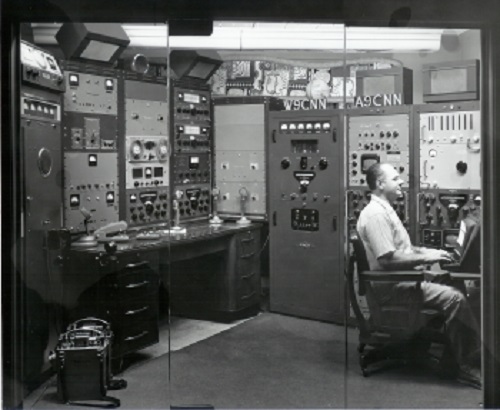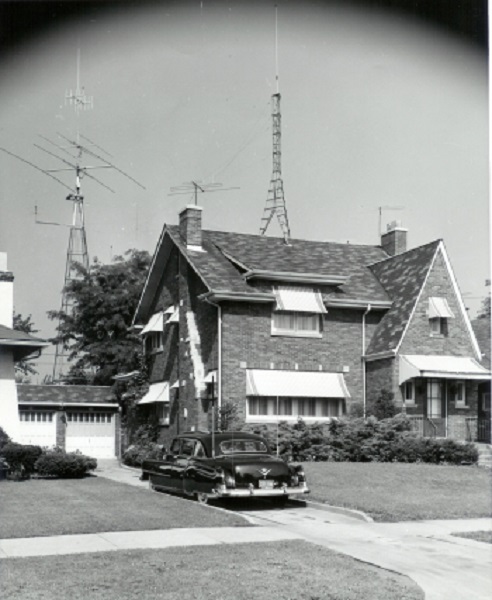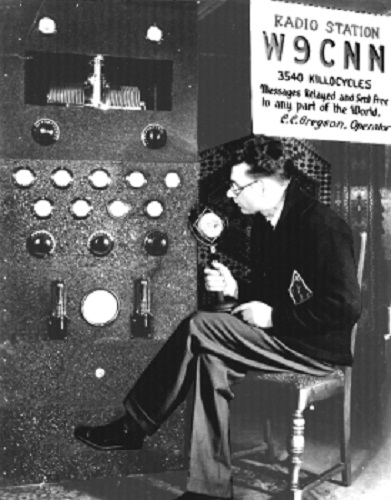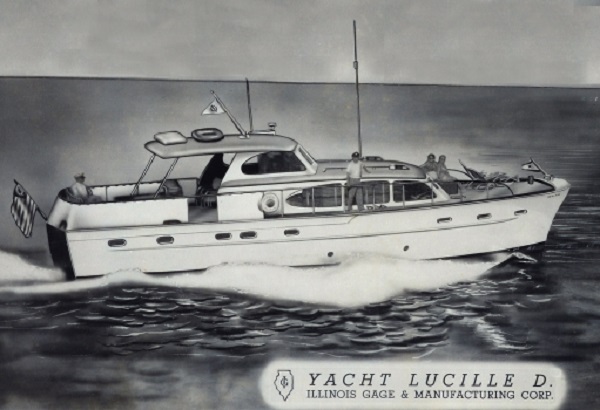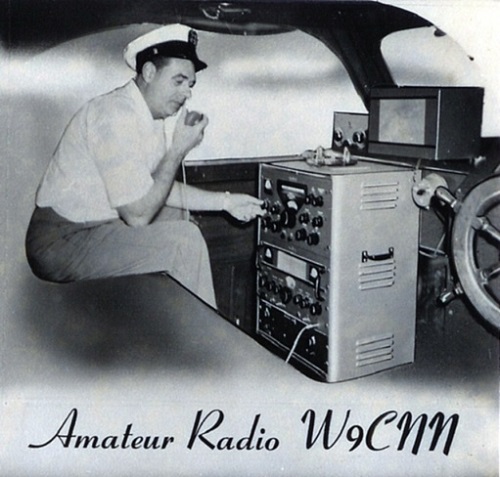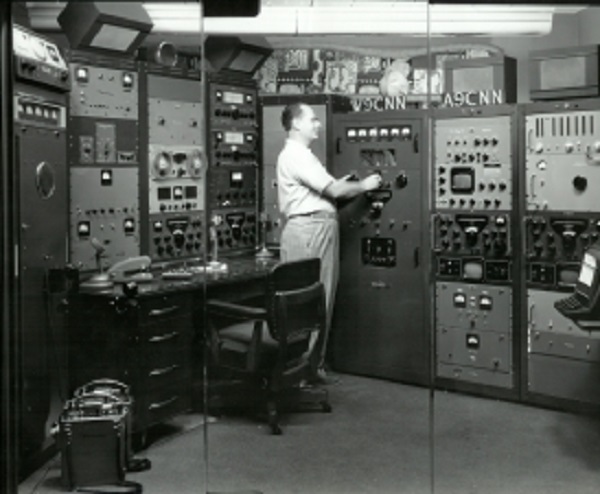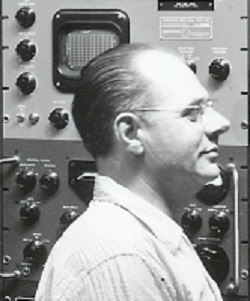 |
Cecil C. Gregson Chicago, IL QCWA # 00755 |
W9CNN, a 1955 Dream Station
W9CNN, owned by Cecil Gregson who lived near Chicago. Cecil was also on RTTY and communicated often with Phil Catona, W2JAV, RTTY Pioneer.
Born in 1906, Cecil.s radio career began in Iowa when he was a teenager. His family owned a farm and he soon discovered that electricity and radios were much more fun than farm work. Life was tough for him, as his father was overly strict and disciplined him often. His brothers liked fishing and hunting. Instead of joining them Cecil would stay at home and work in his makeshift shop in the rear of the barn, experimenting with electricity, building radios and he even hand-built a generator for electrical power.
In 1927, at age 21, Cecil decided to leave the farm. He jumped on his motorcycle and went to Chicago. Licensed earlier, his ham call changed in 1927 from 9AJE, Corwith Iowa, to 9ESU Chicago. He quickly found employment as a radio repairman for the L. Fish Furniture Company. In 1931 his call changed to W9CNN.
On his lunch hours, he would visit a local machine shop to learn about machining. Eventually he got his own equipment and started doing odd jobs for local auto mechanics in a small machine shop in his garage.
During this time he built a beautiful transmitter that he displayed in public during the same time frame as the Chicago World.s Fair, 1932-1933.
In the late 1930s, he was able to expand his machine shop with leased equipment from the U. S. Government. The government knew that war was on the horizon and needed qualified companies who could manufacture much-needed war related materials. The Gregson Tool and Die Company was founded.
During the war the name changed to Illinois Gage and Manufacturing Company. Government contracts were plentiful and so was money. Cecil lived a good life then, buying a Yacht, joining the Country Club, and all that went with it. This high-life ended with the end of the war when he lost it all.
Starting over, he worked 12 hours a day, 6 days a week and made Illinois Gage and Manufacturing a successful company once again. They specialized in precision machining of missile and aircraft components. His business was booming and the good life returned.
When the war ended Cecil returned to his ham radio passion and with plenty of money to spend, he built the station featured in this article. His home was constructed with a ham station in mind. His cellar had high ceilings that allowed him to install 6-foot high relay racks with room on top to hold additional equipment. As the number of radios increased, so did the heat. To solve the heat problem, he had special ¾-inch thick glass doors installed to wall off the ham station from other areas of the house. These were like the doors you would find on fancy storefronts along Main Street. He also had an air-conditioning installed. (This was not common in the early 1950s. Very few homes anywhere had air-conditioning.)
By 1955 he had completed his station with just about one or two of everything that the Collins Radio Company made. Even by today.s mega-collector standards, this is an impressive station.
If you look carefully you will see the following equipment: Motorola 468.5 MHz Citizens Band FM transceiver; Motorola FM transceiver for 147.5 MHz; Motorola monitor receiver for 29.640 MHz; a Teletype RTTY converter; a Magnacorder tape-recorder which was hooked up to all the transmitters, receivers and the telephone; Collins 32V2 and a 32V3 transmitters; Collins 75A2 receiver with a Sideband Slicer; Collins 75A3 receiver; a Phone Patch and Control Panel, Collins KW-1 Transmitter used for AM-CW-RTTY; Central Electronics 20A SSB Exciter; Radio Products 100 Khz Panadaptor made especially for and hooked to a Collins 51J3 receiver; a Millen Scope for tuning RTTY signals; a Collins 706A3 dual diversity FSK converter; Berkeley frequency meter (0 to 42 MHz); a second Collins 51J3 and scope for RTTY tuning; a Collins 709D1 crystal controlled FSK RTTY exciter; a model 26 Teletype page printer; and on the floor are two walkie-talkies.
His antenna system was no less impressive. It consisted of a 65-foot windmill tower with: from the top at 95. off the ground: a 10-meter coaxial antenna tuned to 29.640 MHz; 10-element 2-meter Telrex beam; 3-element 10-meter Telrex beam; 3-element 20-meter Telrex beam and not shown was a new 3-element 40-meter beam cut to the RTTY frequency of 7140 KHz. He also had other vertical antennas and several dipoles erected. His Cadillac parked in the driveway sported three antennas: one for HF, and two for VHF.
He also enjoyed yachting. His 54-foot yacht was named the .Lucille D.. She was powered by twin GM Diesels; and was capable of going 15 mph. She slept 10 comfortably. Cecil had all top of the line RCA marine equipment installed, an 11-channel Ship to Shore, a Direction Finder and a 21. RCA television set. He also had a Fisher Hi-Fi system installed. The yacht.s ham radio station was the most impressive I have ever heard of for a pleasure craft of this time period. He had a Collins 32V3 transmitter and a 75A3 receiver, and operated on phone and CW, at dock and while under-way.
This company yacht was used in Lake Michigan during the summer and was moved to Miami for the winter. If you were lucky enough to be a customer of Illinois Gage, you would have been invited to enjoy the yacht. He also provided an air-conditioned Cadillac for customer use while in Miami.
A typical Ham while on the air, in 1954 Cecil intercepted a message and was responsible for finding a portable Iron Lung for a young Polio victim in Jamaica and having it shipped to him immediately by air. In 1955 he handled a message for a young serviceman in Austria who needed to coordinate air transportation for his wife who lived near Chicago. Within a few minutes he was able to report back to Austria that he was successful in delivering the message and the soldier.s wife would be joining him soon.
Cecil Gregson and his station were featured on the cover of CQ magazine in September 1955. Unfortunately, it was soon discovered that Cecil had Cancer. After a long illness he became a Silent Key at age 49, on August 13, 1956.
I would like to thank Cliff Gregson for providing his father.s biography, the station details and photos of his early transmitters.
CREDITS
Photo #1: W9CNN
